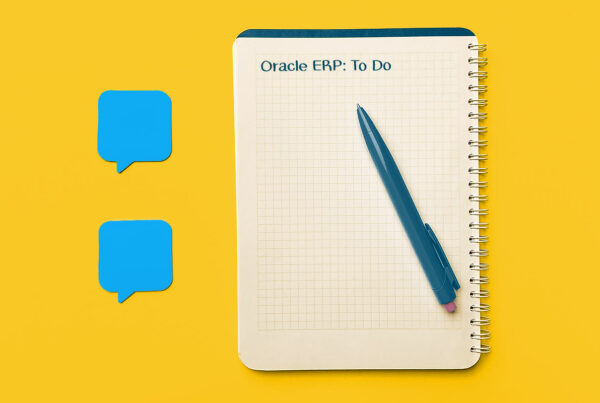It’s no secret that business management software has significantly evolved in recent years and continues to do so at a rapid pace. Technology systems are constantly enhanced with improved functionality, features, and integrations. It’s quite possible that over time, you’ve outgrown your business software.
As your business has grown and matured — adding more clients, staff, and business processes — it’s only logical that your technology needs have changed as well. Unfortunately, if your system isn’t keeping up with these changes, it’s limiting your growth potential.
The idea of replacing outdated software systems can be intimidating. The benefits, however, can far exceed the initial investment. A recent Forrester economic impact study showed that some organizations saved as much as $10.6 million in legacy software costs alone, including legacy licenses, maintenance, hardware, and system administration costs over a 3-year period. When you add in the ROI increase from improved operational efficiency, increased employee productivity, and other benefits, it’s easy to see why updating your business software is in your best interest.
Here are six signs it’s time to replace your business management software.
1. Your System Doesn’t Play Well With Others
Not all ERP software is “one size fits all,” and integration with other tools is paramount to a sound system. If your legacy business system is cut off from other software functionality, you’re missing access to crucial analytics and valuable business insights.
Using multiple tools and platforms to meet the needs of different business functions isn’t problematic in and of itself. The problem arises when these tools don’t talk to each other and is only exacerbated as your business grows and new integrations are needed.
If you’re unable to integrate your critical software systems, it’s time for a change.
2. Operation Costs Keep Increasing
Are you still getting a good value when you add up the operation costs of your current business software system — standard maintenance, deployment fees, integration maintenance, and new integration costs? Don’t forget to factor in extra costs that are easy to overlook — hardware and software components you maintain solely to keep the legacy system running.
If you’re paying too much and not getting enough in return, it’s time to explore more intelligent solutions. We frequently work with companies that need an upgrade but aren’t sure if a complete ERP overhaul is the best route. We partner with them to develop a custom software solution to combine the processes that are working well and update the ones that aren’t.
3. Your Software Isn’t Compatible With Your Employees
Today’s workforce is technologically-savvy. When trying to attract fresh talent, new hires will expect your systems to be on-par or better than the sophisticated software used by their previous employers. Outdated interfaces or frustrating manual inputs will turn off new and seasoned employees alike, and, as more companies shift to remote work arrangements, mobile access is more important than ever.
If your ERP software isn’t compatible with the humans using it, user experiences become disconnected, and systems begin to fail. Connecting employees, suppliers, and customers to relevant resources and data points are critical to meeting their expectations. Legacy systems that inhibit collaboration instead of encouraging it are a hindrance to your workforce.
4. Staff Are Increasingly Creative With Workarounds
Speaking of your team — if your employees are constantly looking for workarounds to get things done, it’s time for an upgrade. Spreadsheet olympics and manual data entry are two of the most common culprits. A recent report from Aptean finding that nearly 60% of users surveyed manually export data from their ERP systems to work with it in spreadsheets. Another 41% do manual data entry when they could be taking advantage of automated exports.
That same report found that workarounds add as many as 10 hours to the typical workweek, which wastes resources and leads to the more insidious problem of workarounds becoming the norm instead of the exception.
5. Reporting is a Chore
A sure sign you’ve outgrown your business software is when reporting becomes a chore. Whether the data isn’t reliable due to delays in entry, the time involved in making updates is burdensome, or the information is inaccurate because of manual entry mistakes, the result is the same — you’re missing out on data insights necessary to run your business.
Real-time access to your data is critical to drive better business performance. Data and transactions only grow in volume and complexity as your company grows. To keep track of what’s happening across your organization and make data-driven decisions, you need business technology that works for you instead of against you.
6. You Struggle with Security & Compliance
Remember those spreadsheets and workarounds we mentioned? Not only are they a problem when it comes to efficiency, but they also represent a significant security risk.
A sound business software system maintains secure data records, provides the appropriate level of access to different users, and accurately tracks changes made to the data to ensure processes are followed correctly. It also assures compliance with constantly evolving state and federal regulations, industry protocols, customer data housing laws, and requirements for customer-facing applications.
Centralizing your security and compliance functions mitigates risk, reduces liability, and improves quality assurance.
Is It Time for a System Upgrade?
Having the right business software technology helps your business move forward proactively and in real-time as you grow and expand your operations. Whether you’re ready to move forward with a more modern software solution or have questions about how custom software development can improve the integration of your existing system processes, Traust is ready to help.





